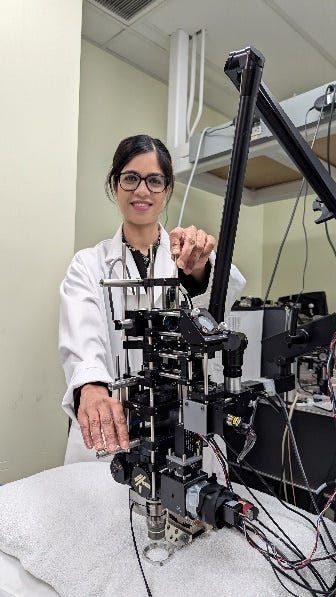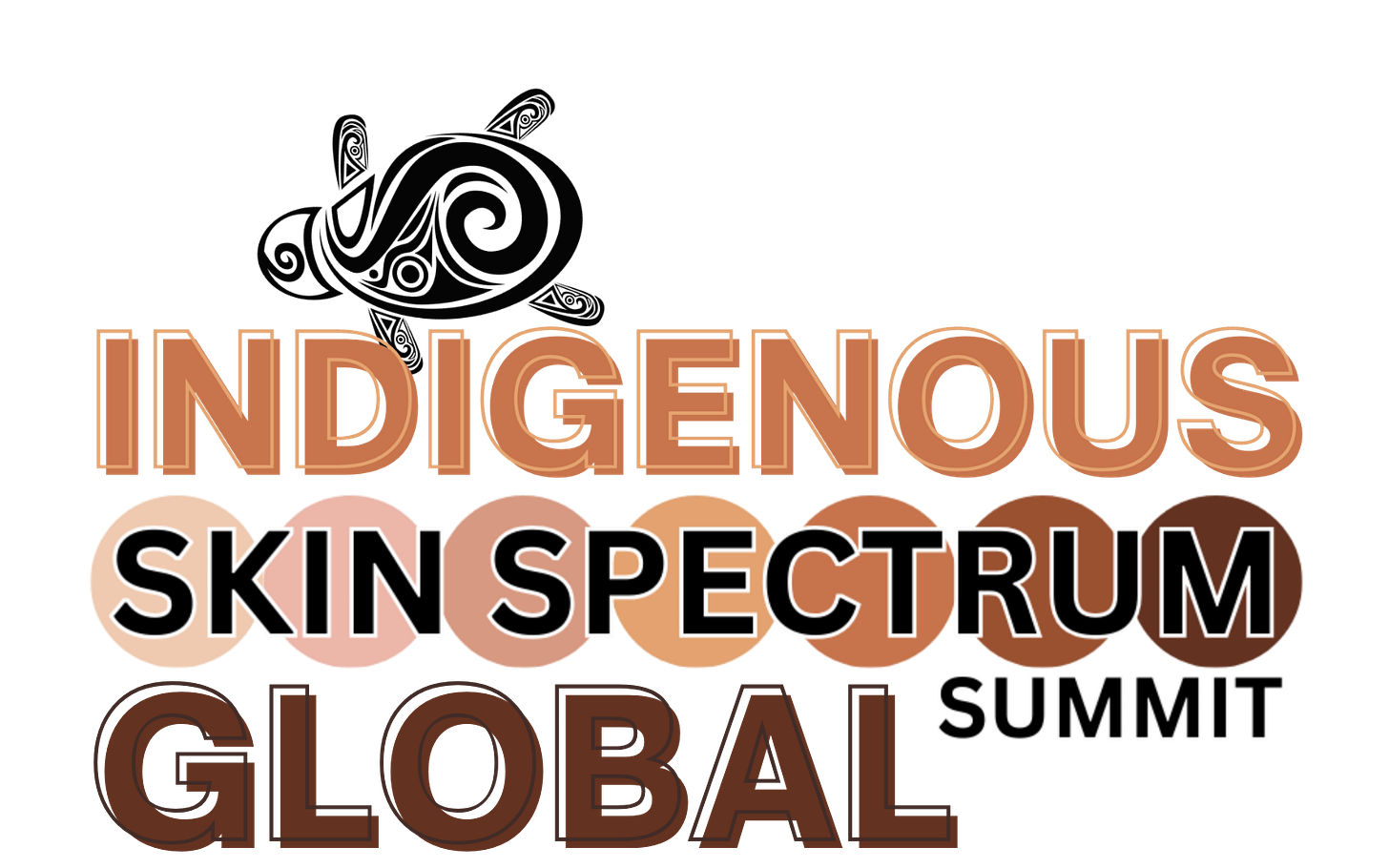University of Toronto develops new skin of colour training modules
Ongoing project from the university shows promising results in pilot trial (Issue #235, 1,500 words, 7 minutes)
An ongoing project from the University of Toronto Temerty Faculty of Medicine addresses gaps in student education about skin conditions in patients of colour, Dr. Muskaan Sachdeva told delegates at the 10th annual Skin Spectrum Summit on Oct. 5, 2024, in Toronto.
Dr. Sachdeva is a third-year dermatology resident at the University of Toronto. She was the 2023 winner of the 2023 Canadian Skin of Colour & Diversity Scholarship provided by Pfizer Canada.
Dr. Sachdeva said that the project was created to fill some of the gaps in medical school and education related to treating and diagnosing skin conditions in patients of colour. To that end, the project team created 10 training modules that examined common skin conditions and presentations and how those were different in skin of colour patients. The project included a national pilot study to test the modules, gather feedback, and gauge interest among medical students. She said she hopes the modules will be integrated into the curriculum at the medical school at the University of Toronto and eventually at all Canadian medical schools.
Dr. Sachdeva said the modules covered psoriasis, atopic dermatitis, acne, rosacea, vitiligo, hidradenitis suppurativa, disorders of hyperpigmentation, melanoma, keratinocyte cancers including basal cell and squamous cell carcinomas, and tinea infections. Family physicians and specialists most often see these conditions.
For the pilot study, researchers administered tests to 172 participants from 17 medical schools before and after they studied the modules, assessing their confidence in their knowledge and diagnostic accuracy when treating skin-of-colour patients. Investigators also objectively evaluated the respondents' knowledge and diagnostic accuracy.
Dr. Sachdeva said the pilot study findings showed the modules significantly increased respondents' confidence in their knowledge and diagnostic accuracy. Objective results also showed an increase in knowledge and diagnostic accuracy. The modules were able to bridge some of the gaps for the 10 dermatologic conditions, she said.
Dr. Sachdeva said feedback from the respondents included suggestions that more practice questions should be included in the modules and that an accessible resource list for skin-of-colour dermatology should be provided. She said the project creators hope to create a database for each module that will allow students to learn even more about the conditions the module covers. Respondents also suggested adding a sensitive content warning for students studying in public.
Bottom Line: An ongoing project from the University of Toronto medical school is addressing some of the gaps in student education about skin conditions in patients of colour by developing 10 training modules on the 10 most commonly seen skin conditions. Findings from a pilot study showed that the modules increased respondents' confidence in their knowledge and diagnostic accuracy and their actual knowledge and diagnostic accuracy.
From the literature on dermatology education
Rash decisions: Improving pediatrician skills in dermatologic diagnosis
Researchers conducted this study to assess how well a web-based tool served to help physicians develop their skill at diagnosing image-based cases. They also identified case-level variables that were associated with diagnostic errors.
A convenience sample of pediatric trainees and attendees were eligible for participation. Physicians practiced 334 pediatric dermatology image-based cases using a web-based tool until they achieved a performance standard. The participants were asked to identify whether the case was concerning, the morphologic category, and the specific diagnosis. After every case, participants received corrective feedback and a report on their progress toward the performance standard.
Among 185 participants, there was a significant improvement in diagnostic performance in classifying concerning vs non-concerning (+19.2% [95% confidence interval (CI) 17.7, 20.6]), morphologic category (+17.9% [95% CI 16.5, 19.3]), and specific diagnosis (+25.2% [95% CI 23.4, 26.7]). The median number of cases required to achieve the performance standard was 142 (IQR 96, 209; min 58, max 330), with a median time to achievement of 57.3 minutes (IQR 38.7, 84.3).
Based on 38,502 case interpretations, the investigators found children with darker vs lighter skin colour had lower odds of correct identification of "concerning" (odds ratio (OR)=0.87; 95% CI 0.83, 0.93), morphologic category (OR=0.91; 95% CI 0.85, 0.97), and specific disease (OR=0.96; 95% CI 0.90; 0.99). Fewer than 60% of participants correctly identified bullous variations of diseases, psoriasis, herpes infections, and nonspecific viral infections.
Dermatological diagnostics in patients with ‘skin of colour’: How confident are German dermatologists?
Investigators conducted an online survey among German dermatologists regarding training and experience in diagnosing dark skin, difficulties in recognizing dermatoses and the desire for training and further education in skin diseases of skin of colour.
They received 236 responses. Of those, 65% of participants felt unsure to very unsure about recognizing skin conditions in people with dark skin. Training in recognizing skin types IV to VI was rated as poor to very poor by 76%, and 73 % rated the current literature on the diagnosis of dark skin as poor to very poor. Some 89% reported that they have difficulties in diagnosing skin diseases in dark skin in their daily practice.
Addressing visual learning equity in undergraduate dermatology education: Skin colour representation across dermatology lecture images at Rutgers New Jersey Medical School
Researchers evaluated dermatology lectures at the Rutgers New Jersey Medical School (NJMS) using the New Immigrant Survey (NIS) Skin Color Scale. They analyzed four pre-clerkship lectures featuring various skin lesions and categorized images in the lecture materials as light/White, medium/Brown, and dark/Black skin types.
The light/White skin category was the most heavily represented, accounting for 59.5% (n=185) of all images across the four lectures; medium/Brown skin type accounted for 16.1% (n=50), and dark/Black skin type was 24.4 % (n=76). Across the four lectures, 109 dermatologic conditions were covered. Of the 109, 35 (32%) only included images from one skin tone, usually light/White. In comparison, 17 (16%) included images of all three skin types.
NJMS is located in Newark, New Jersey, a diverse community in which 48.2% of its residents identified as Black/African American and 36.8% identified as Hispanic/Latino in 2022. The study authors note that NJMS has made efforts to promote visual learning equity, especially to represent its community.
VIDEO: Teaching dermatology for all types of skin | Evening Rounds S3:E6
Dermatologist Janiene Luke, MD, shares her perspective on proper skin care, dermatology education for all skin tones, and the importance of forming strong patient connections. Dr. Luke is a Clinical Professor and the Residency Program Director at the Loma Linda University Department of Dermatology, Loma Linda, Calif.
At the intersection of skin and society
In 2024, CeraVe partnered with the Canadian Dermatology Foundation (CDF) to fund and support the research of an outstanding dermatologist investigator through the Dr. Mercy Alexis Research Grant in Skin of Color Dermatology.
Dr. Tashmeeta Ahad, who was initially awarded the two-year grant when it was first announced in 2023, is pursuing research that has the potential to change the way skin cancer treatment is monitored across the skin spectrum, offering a non-invasive alternative to traditional surgical biopsies. Dr. Ahad is a clinical assistant professor and director of translational photomedicine research at the University of British Columbia (UBC) Department of Dermatology and Skin Science.
This initiative celebrates the life and memory of Canada's first Black female dermatologist, Dr. Mercy Akuffo Alexis. Growing up in Ghana and later in the U.K. and the Netherlands, Dr. Alexis practiced dermatology in Toronto for more than four decades and was recognized by her peers as a visionary in her field.
Dr. Ahad’s research uses innovative, non-invasive optical imaging techniques to monitor skin cancer treatment in all skin phototypes. This method offers a painless alternative to surgical biopsies, providing detailed, microscopic images of the skin to detect cancer cells without surgery. This large clinical project uses non-invasive optical biopsy as a novel tool to monitor patient responses to skin cancer treatments over time.
Many patients prefer less invasive treatment options for their skin cancer, such as topical treatments, cryotherapy, curettage, and photodynamic therapy.
“This research will offer a novel way of monitoring skin cancer treatment without undesired effects on the patient,” said Dr. Ahad in a press release. “This will improve cancer care by increasing our understanding of skin cancers, the effectiveness of treatments, and by guiding treatment to improve cure rates.” So far, she has recruited more than 50 patients for this longitudinal study.

By tracking patient responses across diverse skin tones, the research team gathers valuable data that could lead to more effective treatment strategies for all patients. By focusing on inclusive research in skin of colour and promoting non-invasive techniques, this research will improve patient experiences and outcomes in skin cancer therapy and increase the understanding of skin conditions that affect skin of colour.
This week
Feb. 28 is Rare Disease Day
March 1 is Self-Injury Awareness Day
March is National Nutrition Month in the U.S.
Something to think about in the week ahead . . .
—Jim Rohn, U.S. businessman and author of How to Obtain Wealth and Happiness (1930 – 2009)
Next week
Montreal-based dermatology resident Dr. Nickoo Merati details the findings of a study of the lived experiences of Indigenous people with atopic dermatitis in Canada.
One month to the first Global Indigenous Skin Spectrum Summit in Montreal
Early bird registration pricing is still available to Skin Spectrum Weekly readers for the first Indigenous Skin Spectrum Global Summit, which will be held in Montreal on April 5, 2025.
The summit will allow attendees to learn more about the unique dermatologic challenges facing Indigenous, rural, and circumpolar populations worldwide. Experts worldwide will provide insights on how physicians can support equitable health for these populations.
Summit chair Dr. Rachel Asiniwasis (Regina) leads a world-renowned faculty that includes Dr. Rachel Pugh (Australia), Dr. Carsten Sauer Mikkelson (Denmark), Dr. Monique Mackenzie (New Zealand), Dr. Anna Chacon (Florida), Dr. Dana Slape (Australia), Dr. Carolyn Jack (Montreal), and other thought leaders.
More details on the Global Summit at this link.
If you enjoy Skin Spectrum Weekly, why not check out the Chronicle’s other publications, podcasts, and portal?
Established in 1995, The Chronicle of Skin & Allergy is a scientific newspaper providing news and information on practical therapeutics and clinical progress in dermatologic medicine. The latest issue features:
Drs. Ilya Shoimer (Calgary), Michael Stevens (Bedford, NS.), and Mark Lupin (Victoria, BC) discuss the current strategies for managing actinic keratoses, including identifying the risk of progression to squamous cell carcinoma.
Dr. Irina Turchin (Fredericton, NB) describes findings from recent research on the safety and efficacy of topical roflumilast 0.3% in treating psoriasis.
Drs. Yuka Asai (Kingston, Ont.), Benjamin Barankin (Toronto), Fiona Lovegrove (London, Ont.), and Sam Hanna (Toronto) review some of the significant dermatologic treatment approvals of 2024.
Plus regular features, including the popular column “Vender on Psoriasis” by dermatologist Dr. Ron Vender.
You can read a recent digital edition of The Chronicle of Skin & Allergy here. To apply for a complimentary subscription or to request a sample copy, please email health@chronicle.org with your contact information.
The Women in Dermatology e-newsletter updates readers with new findings concerning dermatologic issues affecting women and the female dermatologists who care for them. Read the current issue here.
Season three of the Vender on Psoriasis podcast with Dr. Ron Vender has begun. Listen to the new season here. In episode five, Dr. Vender discusses whether vitamin D influences psoriasis severity, sex differences in psoriatic inflammation itch, and the risk of psychiatric disorders associated with acitretin.
And if you’re looking for a web destination for all things derm, visit derm.city, “Where Dermatology Lives.” Please like, rate, review, and share it with your colleagues.
You are receiving this newsletter because you subscribe to The Chronicle of Skin & Allergy or another Chronicle journal, have attended a Skin Spectrum Summit live event or webinar, or have previously requested a subscription to one of our newsletters. If you no longer wish to subscribe to this newsletter, please email the subject line “Unsubscribe Skin Spectrum Weekly” to health@chronicle.org.
Skin Spectrum Weekly is published by Chronicle Companies, 701 Ellicott Street, Buffalo, NY 14203. Canada: 1460 The Queensway, Suite 212, Toronto, Ont. M8Z 1S4
Mitchell Shannon, Publisher; R. Allan Ryan, Editorial Director; John Evans, Managing Editor; Jeremy Visser, Editor; Cristela Tello Ruiz, Client Services; Joyce Pitters-Hinds, Client Experience Associate; Shannon Abbott, Associate Conference Organizer
Content is copyright (c) 2025, Chronicle LifeSci America Corp, except as indicated. Interested in contributing to this newsletter or learning more about Chronicle’s services? Please write to us at info@skinspectrum.us
Skin Spectrum Weekly is a reader-supported publication. To receive new posts and support my work, consider becoming a free or paid subscriber.








